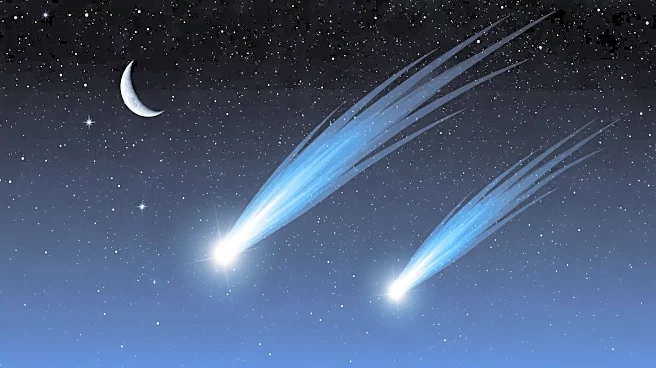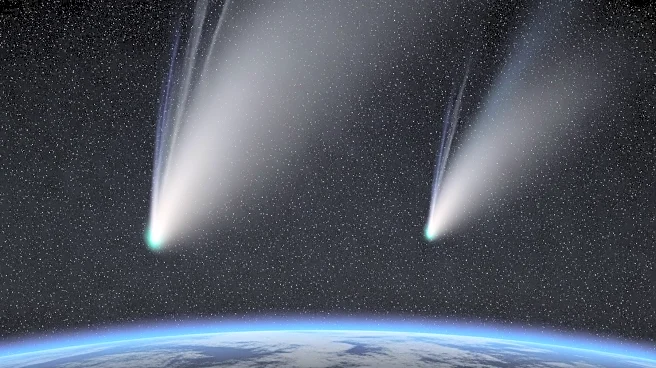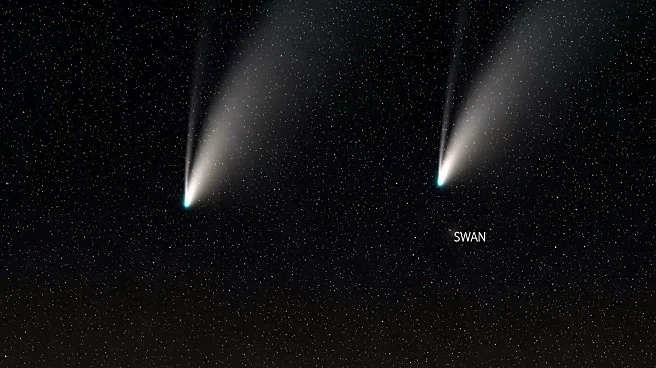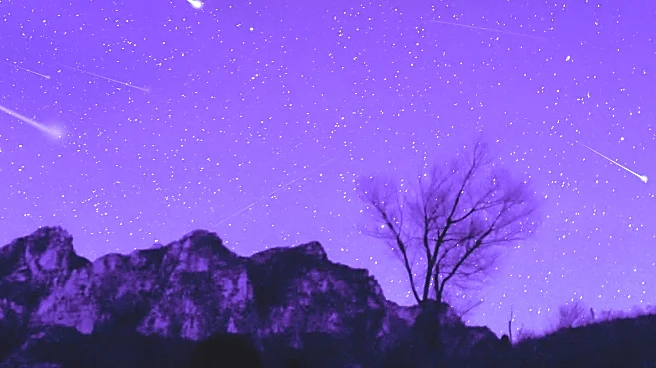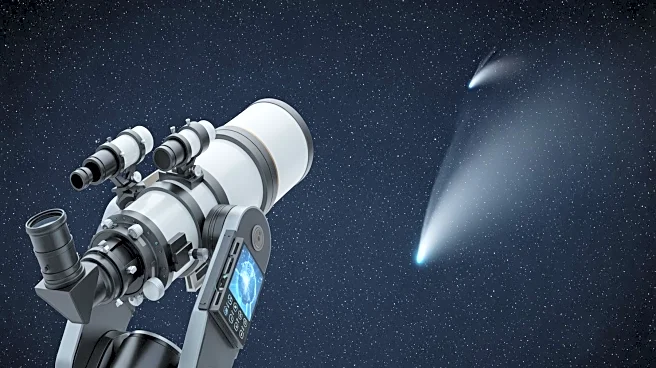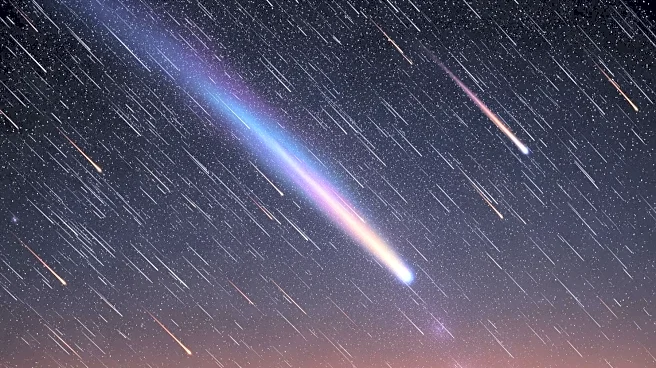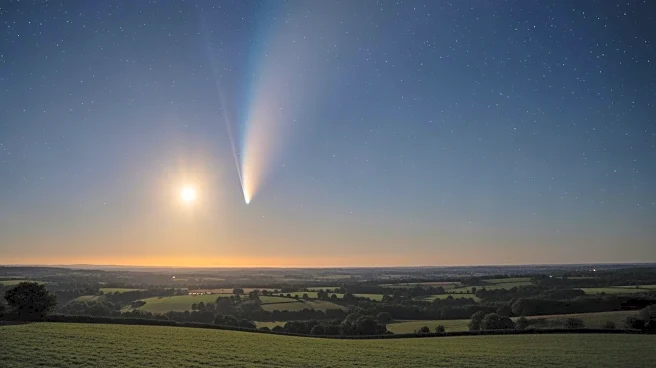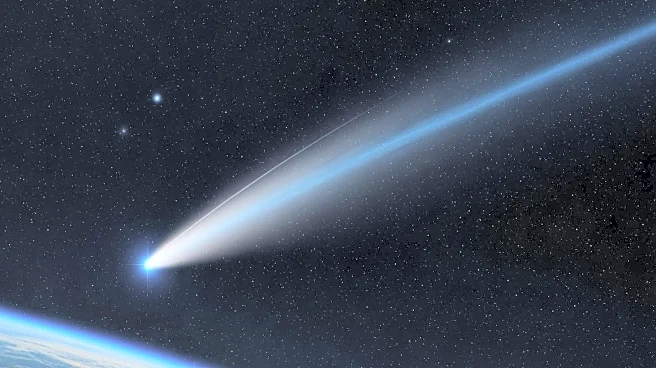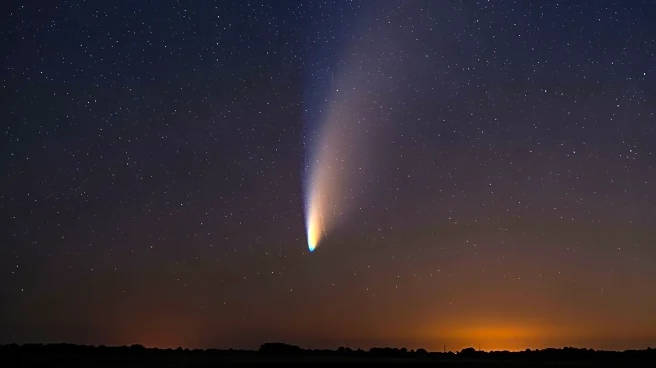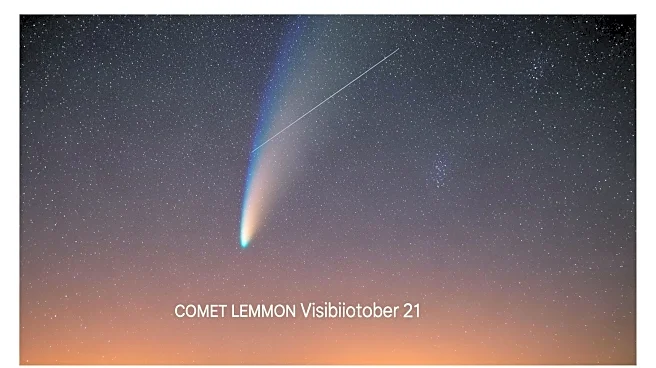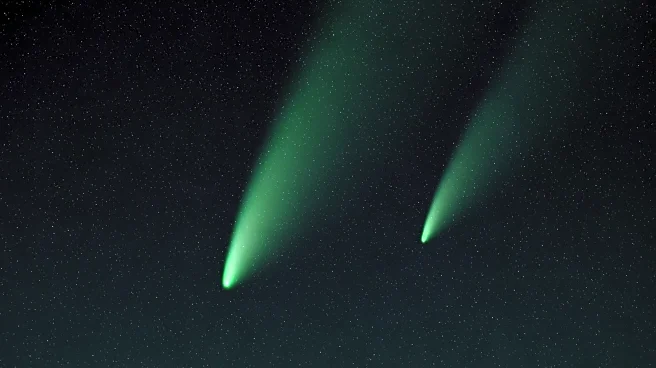What's Happening?
NASA is observing a rare cosmic event as two comets, Lemmon and Swan, make their closest approach to Earth. Comet Lemmon will pass approximately 56 million miles from Earth, while Comet Swan will come even closer
at about 24 million miles. Both comets are expected to reach peak brightness between Monday and Tuesday. The Virtual Telescope Project, led by Astronomer Gianluca Masi, is providing a live stream of the event starting at 1:30 p.m. on Monday. Comet Lemmon, discovered in January, has been steadily brightening and is currently visible with binoculars or small telescopes in the western evening sky after sunset.
Why It's Important?
This event is significant for astronomers and space enthusiasts as it provides a unique opportunity to observe celestial objects in close proximity to Earth. The visibility of these comets offers a chance for scientific study and public engagement with astronomy. Such events can inspire interest in space exploration and increase awareness of the dynamic nature of our solar system. The live stream allows a global audience to participate in the observation, fostering a sense of community and shared experience in scientific discovery.
What's Next?
Following the closest approach, astronomers will continue to monitor the comets' trajectories and brightness levels. The data collected during this event may contribute to future research on comet behavior and characteristics. Public interest generated by the event could lead to increased support for space exploration initiatives and educational programs. The Virtual Telescope Project may host additional live streams for upcoming celestial events, further engaging the public in astronomy.
Beyond the Headlines
The observation of these comets highlights the importance of international collaboration in space research. Projects like the Virtual Telescope Project demonstrate how technology can bridge geographical gaps, allowing scientists and the public to share in the wonders of space. This event also underscores the role of amateur astronomers and citizen scientists in contributing valuable observations to the scientific community.
